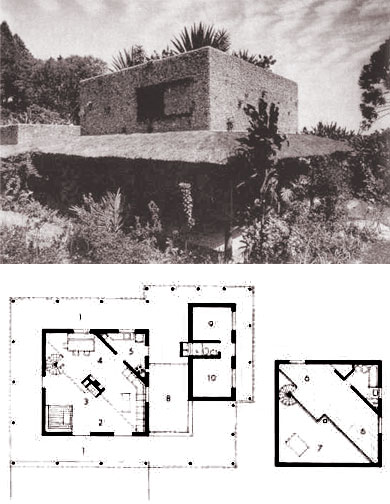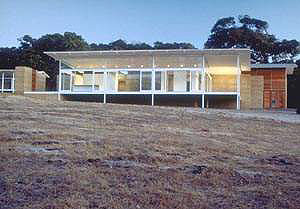Yung Ho Chang, founder of Atelier FCJZ, the first private architectural firm in China, has been part of China’s tremendous transformation. One of Chang’s most notable works is his Split House, completed in 2002. Chang’s sensibility to materials fuses the traditional with modern design by using rammed earth, an ancient method for building.
Building With Earth: Design & Technology

The new book, Building With Earth: Design & Technology, by Prof. Dr. Gernot Minke offers a comprehensive overview of the many uses of and techniques for processing clay. Drawings and photographs of twenty structures offer specific and inspiring examples of clay architecture from around the world.
The Valeria P. Cirrel House

The Valeria P. Cirrel House was designed by Italian-born architect Lina Bardi and 1958 near Sao Paulo, Brazil. The adobe residence employed folk elements “highly unusual in the modernist vocabulary of the time” according to When Brazil Was Modern: A Guide to Architecture, 1928-1960.
Vitruvius on Adobe

In the only architectural treatise surviving from Classical Antiquity, Vitruvius: Ten Books on Architecture refers in some detail to adobe, describing suitable earth and suggesting that adobes should be made in the spring and left for at least two years to dry. He mentions that building by-laws in Utica (near Carhage) specify that only adobes of five years old be used for building, to be so certified by the aedile (magistrate).
Oldest Mud Brick Structure in the World
The ceremonial enclosure of Khasekhemwy–Hierakonpolis’ only standing monument is built entirely of sun-dried mud brick, with walls 5 meters (16.4 feet) thick and still preserved in places to its original imposing height of 9 meters (29.5 feet). It is the oldest freestanding mud-brick structure in the world. For the third time, it has been listed with the World Monument Fund as one of the world’s 100 most endangered monuments. Decorated on its exterior with a pattern of recessed paneling or niches and originally plastered white, it must have been a striking sight in its time. Almost 5,000 years later, it stands as a testament to the abilities of its builder, King Khasekhemwy, the last ruler of the Second Dynasty (ca. 2686 B.C.), but the reasons for which it was built remain a mystery.
Kerry Hill

Singapore-based Australian Kerry Hill is regarded as one of the best regional architects utilising natural rammed earth, timber and stone that exude an almost monastic ambience. Built on the banks of WA’s Margaret River, Hill’s Ooi house (above) is a single-storey, three bedroom holiday residence with a guest chalet intended to be the first of several.
Cob Building in Europe
The Cotentin and Bessin Marshlands Regional Nature Park in France proposes to
create one moment of exchanges on cob building. A conference entitled “Cob
Building in Europe” is scheduled for the 12, 13 and 14th of October 2006, in
Isigny-sur-mer, Normandy, France. Download conference the program here
Centre for Alternative Technology
Commissioned by the Centre for Alternative Technology (CAT), structural engineer Toby Hodsdon of Buro Happold will build a 200-seat auditorium with rammed earth walls 7.2m high – the highest in the UK.
Poeh Center

The Poeh Center Museum Building is the tallest adobe building in New Mexico. The four story tower was completed in 1996.
Tel Dan

Tel Dan, one of the more important sites in the Golan Heights near the Israel-Lebanon border, is better known for the world’s oldest intact arched gateway, a 4,000-year-old, mud-brick structure now protected under a modern shelter, but the site is under possible threat from a possible errant Hezbollah missile.
